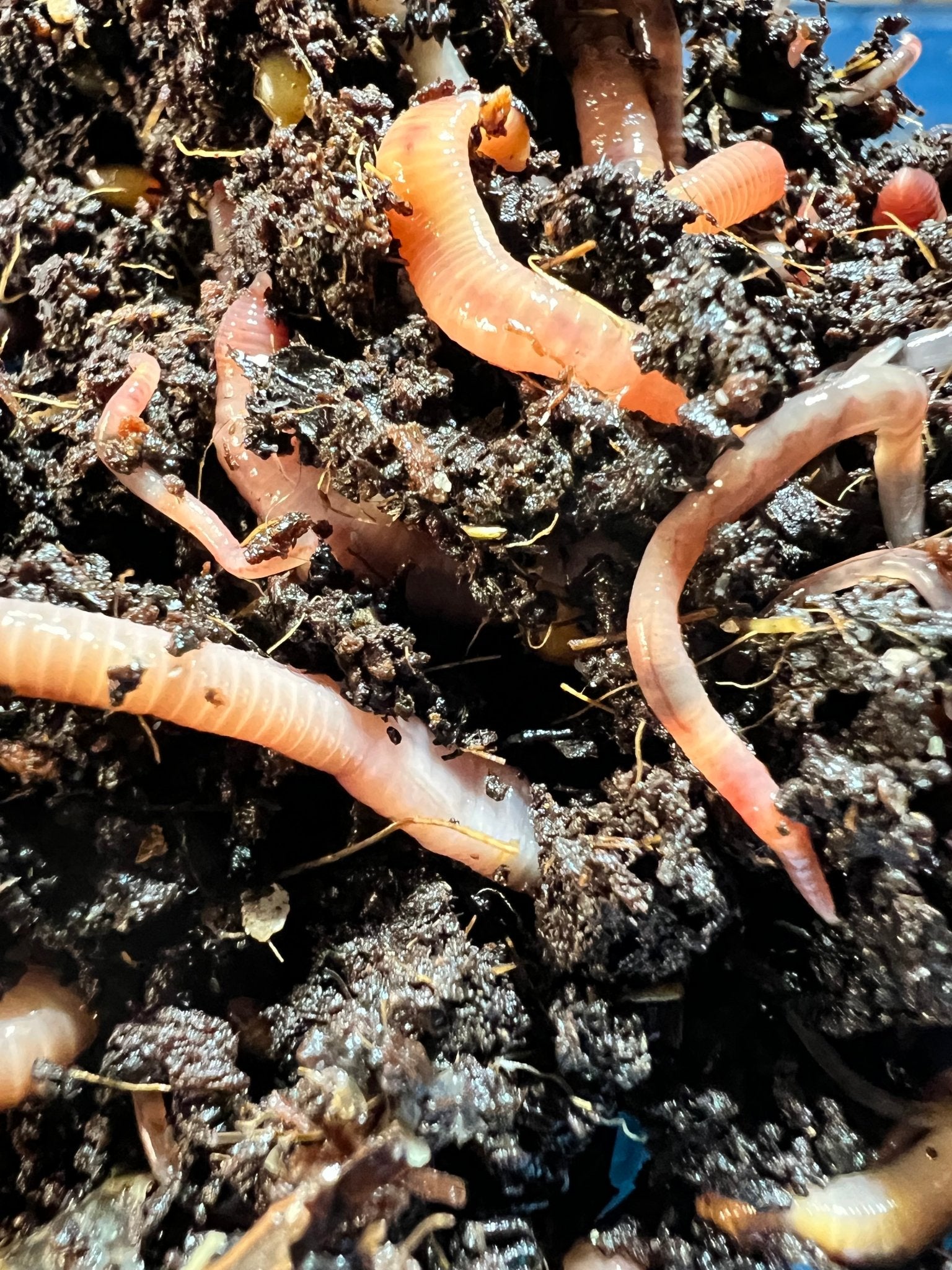Just How Red Wigglers Can Transform Your Composting Experience
The integration of red wigglers into composting practices provides a transformative method to squander monitoring and soil enrichment. Understanding the specific requirements and advantages linked with maintaining a flourishing worm population is important for maximizing their potential.
Benefits of Red Wigglers
Red wigglers, scientifically referred to as Eisenia fetida, are a foundation of reliable composting systems as a result of their amazing capability to disintegrate raw material efficiently. These worms master transforming kitchen scraps, yard waste, and various other organic materials into nutrient-rich garden compost, generally described as worm castings. Lake Hickory Bait. This procedure not just decreases landfill waste yet likewise adds to sustainable gardening techniques
One of the primary advantages of red wigglers is their high reproduction rate, enabling them to populate a composting setting swiftly. This rapid reproduction boosts disintegration rates, resulting in faster garden compost production. In addition, red wigglers flourish in a diverse variety of conditions, making them versatile to different composting arrangements.

Setting Up Your Worm Bin
(Hickory NC Worms For Sale)To produce an effective worm container for composting, mindful attention needs to be given to its style and atmosphere. A perfect worm container should be built of products that are durable yet permit necessary air flow, such as plastic or timber. The size of the bin can differ, yet a quantity of approximately 1 square foot per pound of worms is a great beginning factor.
Guarantee that the container has drain openings to stop water accumulation, which can result in anaerobic problems destructive to the worms. In addition, incorporating ventilation holes will certainly assist keep appropriate humidity degrees and oxygen flow.
Next, it is vital to give bed linens for the worms, which can consist of shredded paper, cardboard, or coconut coir. This bedding not only offers a habitat for the worms but additionally aids in moisture retention.
Position the worm bin in a location that maintains a temperature level series of 55-77 ° F(13-25 ° C) to maximize worm task. Prevent putting the bin in direct sunlight or extreme temperatures. By following these guidelines, you can develop a conducive setting for red wigglers, boosting the performance of your composting procedure.
What to Feed Your Worms

(Hickory NC Worms For Sale)Red wigglers especially enjoy soft, moist foods like watermelon peels, cucumber peels, and banana peels. Nonetheless, it is critical to avoid feeding them citrus fruits, onions, and garlic, as these can be harmful to their well-being. Additionally, cooked foods, dairy items, and meat must be purely prevented, as they can result in odors and bring in bugs.
To maintain optimum problems, it's a good idea to slice bigger scraps right into smaller items, assisting in see here now quicker decomposition. Beginning by introducing small amounts of food and monitor the worms' intake rate; change accordingly to protect against overfeeding, which can produce an unhealthy atmosphere. Finally, supplying a constant feeding schedule will certainly help maintain your worm populace flourishing while boosting the general efficiency of your composting initiatives. By understanding what to feed your worms, you prepared for a successful and lasting composting experience.
Maintaining a Healthy And Balanced Environment
Developing a growing composting setting for red wigglers calls for interest to their habitat, as it directly influences their health and productivity. The excellent habitat must keep a well balanced dampness degree, usually in between 60-70%. Too much dampness can lead to anaerobic conditions, while inadequate dampness might dry out the worms.

The bedding product in the compost should vary and shredded, integrating products like cardboard, paper, and coconut coir. This not only provides a comfy atmosphere but additionally functions as a food source. Lake Hickory Bait. Routinely looking for smells or indications of pests can aid determine possible problems before they rise
Finally, keeping a balanced pH degree, preferably in between 6 and 7, guarantees a conducive habitat for red wigglers, fostering their capability to process raw material properly. By attending to these factors, you can create a lasting and productive composting environment.
Harvesting and Using Compost
Collecting compost from a worm container is a rewarding procedure that changes organic waste right into nutrient-rich material for yards and plants. Once the composting cycle is total, typically after 8-12 weeks, it's time to gather the vermicompost. The first step entails dividing the red wigglers from the ended up compost. This can be done utilizing approaches such as the "light" method, where worms are drawn in to light and can be scooped far from the top layers, or by relocating the compost away of the container and adding fresh bedding to the various other side, motivating the worms to move.
When the worms are eliminated, the staying compost can be filtered to remove any kind of larger bits or undecomposed material. This abundant garden compost can be applied directly to yard beds, blended into potting soil, or made use of as a top clothing for potted plants.
Verdict
Incorporating red wigglers into composting techniques substantially enhances the decay procedure and contributes to the production of nutrient-rich vermicompost. The resulting worm spreadings improve dirt framework, fertility, and microbial task, eventually promoting much healthier plant growth.